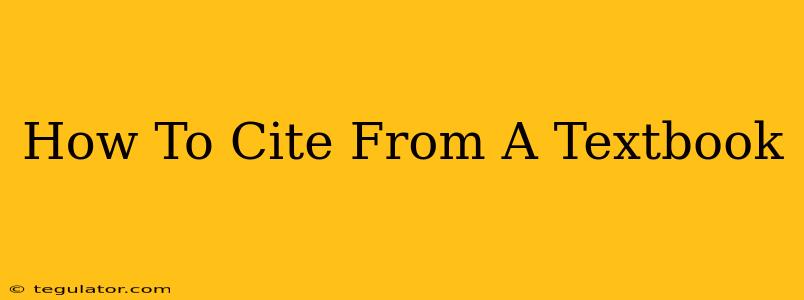Citing sources correctly is crucial for academic integrity. Knowing how to cite a textbook, specifically, is a fundamental skill for students and researchers. This guide provides a comprehensive overview of how to cite textbooks using different citation styles, including MLA, APA, and Chicago. Mastering these methods will help you avoid plagiarism and strengthen the credibility of your work.
Understanding Citation Styles
Before diving into the specifics, it's important to understand that different academic disciplines and publications utilize distinct citation styles. Each style has its own set of rules and conventions for formatting citations. The most common styles include:
- MLA (Modern Language Association): Frequently used in the humanities, such as literature, languages, and cultural studies.
- APA (American Psychological Association): Commonly used in social sciences, psychology, education, and business.
- Chicago/Turabian: Used across various disciplines, offering both a notes-bibliography and author-date system.
Choosing the correct style is crucial. Always follow the guidelines provided by your instructor or publication.
How to Cite a Textbook in Different Styles
Below are examples of how to cite a textbook in the three most common citation styles. Remember to replace the bracketed information with the specific details from your textbook.
MLA (Modern Language Association)
The MLA style generally uses in-text citations and a "Works Cited" page at the end of your paper.
In-text citation: (Author's Last Name Page Number)
Example: (Smith 123)
Works Cited entry:
Author's Last Name, Author's First Name. Title of Textbook. Edition, Publisher, Year.
Example: Smith, John. Introduction to Psychology. 5th ed., McGraw-Hill, 2023.
APA (American Psychological Association)
APA uses in-text citations and a "References" page.
In-text citation: (Author's Last Name, Year, Page Number)
Example: (Smith, 2023, p. 123)
References entry:
Author's Last Name, Author's First Name. (Year). Title of Textbook. Edition. Publisher.
Example: Smith, J. (2023). Introduction to Psychology. 5th ed. McGraw-Hill.
Chicago/Turabian
Chicago style offers both a notes-bibliography and an author-date system. We'll focus on the notes-bibliography style here.
Footnote/Endnote citation:
¹John Smith, Introduction to Psychology, 5th ed. (McGraw-Hill, 2023), 123.
Bibliography entry:
Smith, John. Introduction to Psychology. 5th ed. New York: McGraw-Hill, 2023.
Essential Textbook Citation Information
Regardless of the citation style you use, you will need the following information to accurately cite your textbook:
- Author's Name: Include the last name and first initial(s) of the author(s) or editor(s).
- Title of Textbook: Italicize the title.
- Edition: Specify the edition if it's not the first edition.
- Publisher: The name of the publishing company.
- Publication Year: The year the textbook was published.
- Page Number(s): For in-text citations, always include the specific page number(s) where you found the information.
Tips for Accurate Textbook Citations
- Double-check: Always verify the accuracy of your citations before submitting your work.
- Use a citation manager: Tools like Zotero or Mendeley can help you organize and format your citations.
- Consult style guides: Refer to official style guides for the most up-to-date information and specific rules.
- Seek help: If you're unsure how to cite a particular source, ask your instructor or librarian for assistance.
By following these guidelines and paying attention to detail, you can confidently and accurately cite your textbooks, ensuring academic honesty and a strong foundation for your research. Remember that proper citation is not just about avoiding plagiarism; it's about giving credit where it's due and demonstrating your commitment to scholarly rigor.

